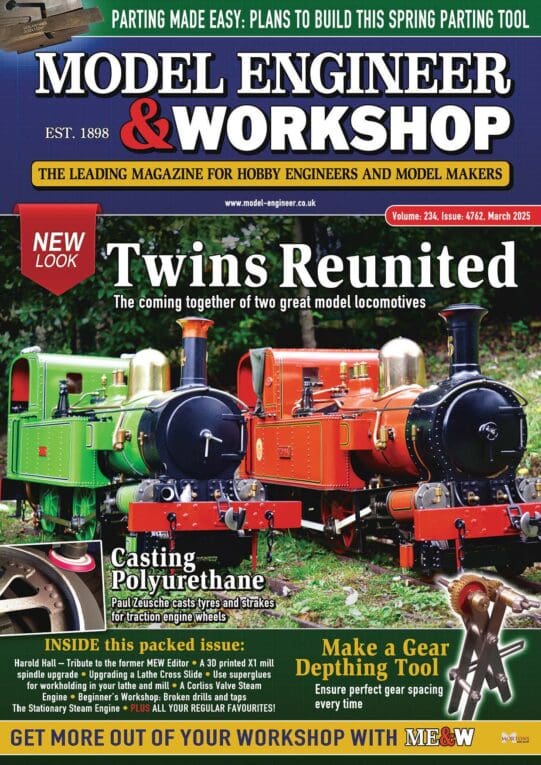Can you not get it in the 4 jaw with a fixed steady?.
If you are worried about the overhang while turning a register for the steady to run on, make up el cheapo quick plug, jam it in and then centre trill for tailstock support. (assuming there is a cored hole. If not so much the better). Get it all initally aligned using a surface gauge, or whatever kind of indicator suits/you normally use before centre drilling of course.
Turn a register, and another one near the jaws (just clean that one up) so when you reverse it to turn the other end register, you have a true running track on which to run the clock. (Unless you want to run your clock on the bore itself, and set up off that which is another option)
Set up the fixed steady and turn to a little under size so you have honing allowance. You’ll need a fairly serious boring bar – I have made one up that is 1″ in dia, and thats what I’d use for that sort of job, and I’d still cut on the infeed and the out to take out any spring in the tool, and twice in and out at the same setting getting near the end. (apologies to grannies)
Oh and set up a stop if you have to use the external jaws on the 4 jaw – just so you don’t pile into them with the cutter. Pity you set length accurately at this early stage; would have been better to have done it after honing/lapping to size/parallel and taken out any taper on entry which is what usually happens.
The mill with a long stout bar is an option, and certainly it can be done, but it will be a pain without power downfeed (which you may well have?) Still you’ll have to turn some kind of OD so you might as well put it in the 4 jaw but once – unless you like cutting ODs with a reversed tool in a boring head. Can be done of course, but doesn’t count as entertainment in my book.
Boring with between centres bar. I’ve never got it to work well in reasonable sizes. It may well be OK (don’t know) on small gunmetal cylinders etc when one is stretching a Myford to its limits!! Every time I have tried to do a bore of any size its been a recipe for chatter, even with x-slides locked etc. Maybe others have a better way of setting up between centres for boring?
———-
Parallel due to flexing. No, once you are cutting in a prepared bore all the forces remain equal. The leverage on the tip, WRT to the point of contact doesn’t change. What you can/will get is spring in the tool. So you set .005, it springs and cuts .003. You remeasure, and see its a few thou undersisize on cut. so you add that next time, and bingo you find you have an oversize hole. See comment about avoiding spring above)
If its tapered its because the lathe is not set straight! See earlier long thread about setting lather straight, or hone it after boring with a barrel lap.
Edited By meyrick griffith-jones on 28/11/2009 14:48:07
Edited By meyrick griffith-jones on 28/11/2009 14:49:29
John Wood1.




